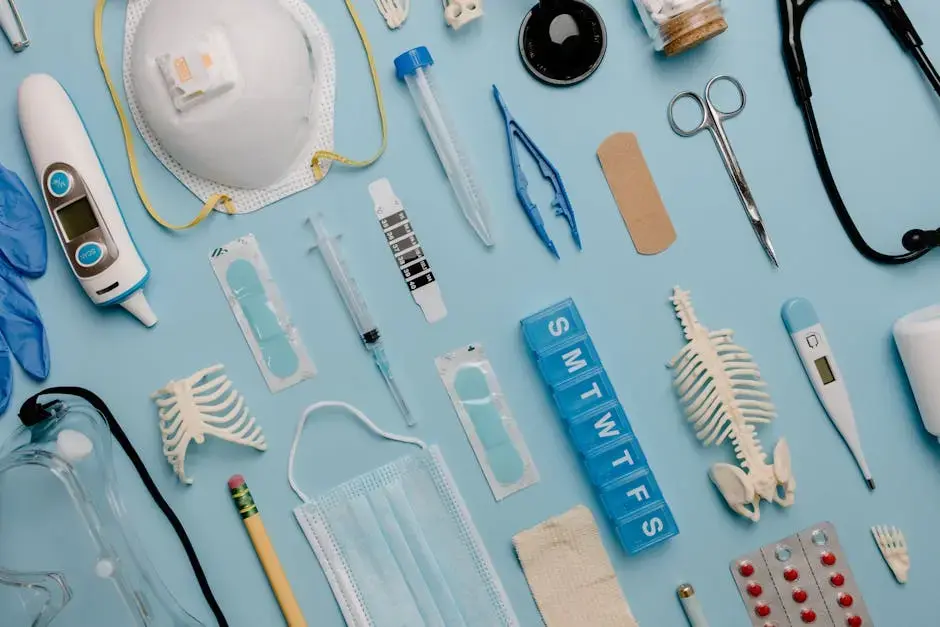Best Practices for Using Tracheostomy Care Kits in Hospitals
- Ahmed Bashir
- Jul 7
- 4 min read
Tracheostomy care is a vital aspect of patient management in hospitals, especially for those requiring long-term respiratory support. Using tracheostomy care kits ensures that healthcare professionals have all necessary tools at their fingertips, leading to better patient outcomes. In this blog, we will explore best practices for utilizing these care kits effectively, helping to bridge the gap between clinical knowledge and practical application.

Understanding the Components of Tracheostomy Care Kits
Tracheostomy care kits are designed to provide essential supplies for the maintenance of tracheostomy tubes. Understanding the components of these kits, including suction catheters, gloves, and sterile water, is crucial for effective use.
Each element in the kit serves a specific purpose. For instance, suction catheters are vital for clearing secretions, while gloves and masks help maintain hygiene during the process. Familiarizing healthcare professionals with these components aids in streamlining the care process and ultimately improves patient outcomes.
In addition to the basic elements, kits may include additional items like dressings and a backup tracheostomy tube. Knowing when and how to use each item can be the difference between a routine procedure and a potential emergency. Encouraging staff to routinely review kit contents can foster confidence and preparedness.
Given the variability in patient needs, adaptability in the usage of the components is crucial. Healthcare teams should collaborate in assessing which items are essential for individual patients, considering their unique clinical conditions and history.
Preparing for Tracheostomy Care: Key Steps
Preparation is key when using tracheostomy care kits. This section outlines essential steps, including the importance of hand hygiene, gathering all necessary supplies, and familiarizing oneself with the patient's specific needs.
Good practice starts even before the kit is opened. Hand hygiene is paramount to prevent infections. Staff should always sanitize their hands before engaging with the patient or the care kit. This simple act lays the groundwork for a safe and effective care session.
Next, organizing all necessary supplies before beginning care reduces delays and disruptions. By ensuring that everything from sterile water to suction equipment is ready at hand, healthcare professionals can focus on the patient rather than scrambling for supplies during critical moments.
Moreover, taking a moment to review the patient's chart can unveil specific needs, such as known allergies, prior complications, or unique preferences. Tailoring the approach to the patient not only enhances safety but also promotes trust and comfort.
Daily Maintenance and Care for Tracheostomy Patients
Daily maintenance of a tracheostomy is essential for preventing complications. This part discusses the daily care routine that healthcare staff should follow, including cleaning techniques and the importance of monitoring the tracheostomy site.
Routine cleaning is critical. Staff members should use sterile saline to rinse the tracheostomy tube, ensuring that it remains clear of debris and mucus buildup. Regular cleaning can prevent infections and ensures that the tube functions effectively.
Also, monitoring the tracheostomy site for any signs of redness, swelling, or discharge is a key component of daily care. Noticing changes early can facilitate prompt interventions, reducing the risk of severe complications. Regular checks should be reinforced by both training and habit.
Of equal importance is the technique of replacing the ties that secure the tracheostomy tube. Staff should change these gently yet decisively to maintain cleanliness and prevent skin irritation. Frequent communication among team members regarding the condition and care of each patient fosters a collaborative approach to health.
Troubleshooting Common Issues with Tracheostomy Care Kits
Even with the best practices in place, issues can arise. This section will address common challenges, such as blockages, infection signs, and how to promptly address these problems using the care kits.
Blockages can occur, particularly with patients who produce more secretions. It's essential to have suction equipment ready as part of the care kit to manage this situation effectively. Staff should be trained to recognize the signs of a blockage, such as difficulty breathing or unusual changes in patient demeanor.
Additionally, being vigilant about infection signs—like increased pain or pus—can lead to swift intervention. Staff should regularly engage in training scenarios that help them practice problem-solving in these critical moments.
Another common challenge involves an accidental decannulation, where the tracheostomy tube becomes dislodged. Quick access to a spare tube is crucial in this scenario. Understanding how to remain calm and promptly follow replacement protocols is vital to patient safety.
The Role of Staff Training in Effective Tracheostomy Care
Training is a cornerstone of effective tracheostomy care. We'll highlight the importance of regular training sessions for staff on the latest protocols and techniques to ensure patient safety and care quality.
Ongoing education fosters a culture of competence and confidence. Training sessions should not only cover foundational knowledge but also focus on emerging practices and technologies. Keeping abreast of the latest advancements is crucial for delivering optimal patient care.
Simulation training can be particularly effective. Whether through real-world scenarios or virtual simulations, staff members can practice their responses to emergencies in a controlled environment, ultimately increasing their readiness during actual care situations.
Moreover, encouraging open discussions about experiences can improve learning outcomes. Staff should feel comfortable sharing challenges they’ve faced with tracheostomy care. This collaboration helps identify areas for improvement and solidifies team unity.
Creating a Culture of Safety in Tracheostomy Care
Developing a culture of safety and accountability among staff is crucial. This section will explore strategies to foster an environment where tracheostomy care is prioritized, enhancing overall patient safety.
Creating a safety-oriented culture begins with clear communication channels. Staff should be encouraged to report incidents or potential hazards without fear of retribution. Creating an understanding that mistakes are learning opportunities promotes a proactive approach to safety.
Furthermore, regular safety audits can identify potential areas of concern before they escalate into serious issues. Establishing a routine for checking supplies, reviewing protocols, and providing feedback helps maintain high standards in patient care.
Lastly, leadership plays a key role in nurturing a culture of safety. By setting the example, promoting discussions around safety, and recognizing team members for adhering to protocols, leadership can inspire a shared commitment to excellence.
Wrapping Up: Enhancing Patient Care Through Effective Practices
By implementing these best practices for using tracheostomy care kits, healthcare professionals can enhance patient safety, improve care quality, and ensure a smoother experience for both patients and caregivers. Consistent training, adherence to protocols, and maintaining a well-stocked supply will streamline the process and support the overall health of those reliant on tracheostomy care.




Yorumlar